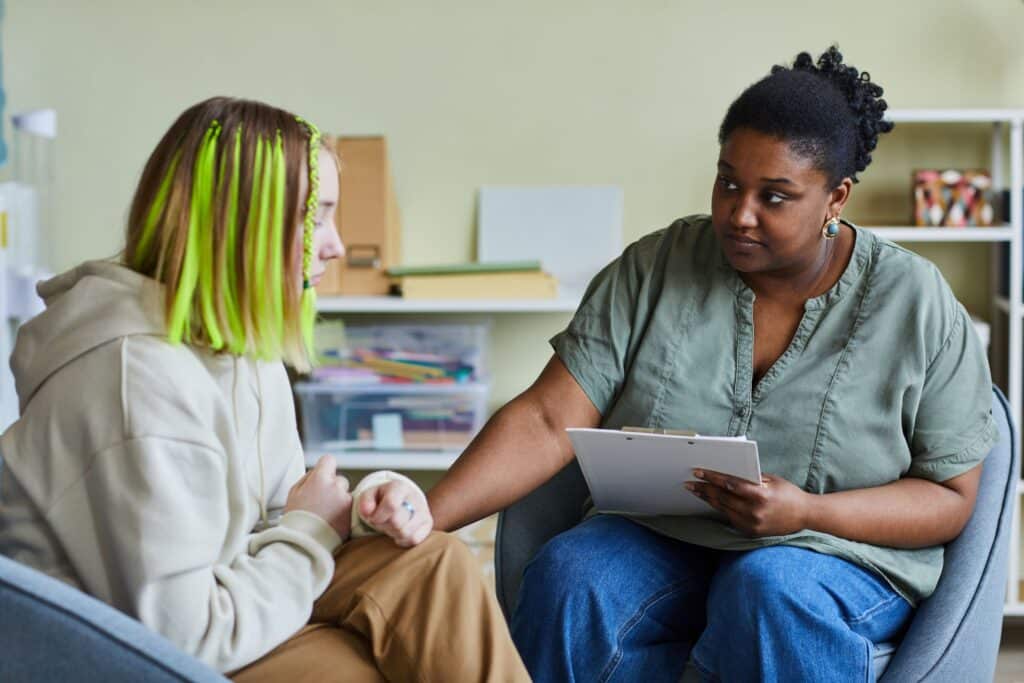We need to take care of ourselves in high-stress jobs. Whether through hobbies, exercise, eating properly, or any of a multitude of avenues, we need to be able to balance our mental health. As educators, numerous responsibilities create stress, but we are not alone. Our students are facing mental health issues like we have never seen before.
So, how do we create an environment that helps lessen that stress for them?
In the Classroom
Understanding that when teachers close their doors, they are in charge of the environment that controls the students. So, one of the first moves that can be achieved is to promote self-awareness and self-acceptance. Guiding students toward comprehending their own characteristics and attitudes may help them adjust their stress levels. Allowing them to explore their positive achievements, personality traits, and overall personal goals can support this idea.
Create an Inclusive Space
Promoting the concept that they are all different, but can all be accepted will help the overall environment, which may allow them to take comfortable risks and speak out, as opposed to worrying about saying the wrong thing and being made fun of by others. Additionally, when all students begin to recognize they can accept all perspectives, you have met the inclusive classroom goal.
Limit Cell Phones
Social media and cell phones are a significant obstacle in preventing students from getting to know each other. Not allowing cell phones in class will take away some of the anxiety for students. Planning engaging and interactive lessons can be an instrument in building collaboration and social connection without the use of technology.
Strategies such as jigsaws, Socratic-designed discussions, pair-share activities, and mobile stations will build collaboration that helps shape positive self-awareness and the power of social skills that don’t require looking ideas up on their phones. These methods, appropriately designed, will channel creativity and imagination, which has been lacking in modern education.
Discuss Mental Health
One area that has always had a stigma is that of mental health. Building this concept into classroom lessons may be another way to help students understand what they have the ability to work through when it comes to their own anxieties. Addressing remarks that downplay or mock mental health comments can begin to eliminate pressures on students. But just addressing those may not be enough.
Forcing students to discuss the negative effects these statements can have on an individual are extremely important. Encouraging them to support each other and understand individual experiences that can build each other up will dramatically affect the all-inclusive classroom and self-esteem for everyone.
One of the most difficult aspects for adults and students may be to work through anxiety or situations that cause us to want to shut down. And most often, it’s because we haven’t been instructed on how to work through those moments. So, what can be done?
Focusing on breathing exercises has always been a go-to strategy in dealing with stress. Using counting while breathing, implementing short and long bursts of breathing, or even simply closing one’s eye’s while breathing may calm those nerves.
Leading students through positive scenarios in their minds can combat anxiety, whether it is thinking about an encouraging event or a happy memory. Changing the mind frame during these exercises can alleviate unwanted stress. Even positive self-talk may enhance their abilities to cope with anxiety.
At the School Level
While this is a beginning toward helping students with their mental health, more needs to be introduced on a bigger scale in the whole-school environment.
Mental Health Focused Professional Development
Professional development for faculty and staff regarding mental health is imperative. If educators struggle taking care of themselves, how can they be expected to take care of their students? Professional development must be targeted in its focus and must provide integral approaches toward bringing it into the school and classroom. Administration must take a strong stance in supporting the implementation of mental health plans and procedures in the district.
One way of achieving this plan is to bring in a Student Assistance Program (SAP). There are multiple levels to program. Student assistance lines students up with a case worker, with permission from the parents and an evaluation by a mental health liaison, which can be any member of the faculty and staff within a school. That caseworker is tasked with meeting each of the students regularly to check in on them, their grades, and simply how they are faring. The next level, again with parent permission and an evaluation, deals with mental health and drugs and alcohol.
At these two levels, the mental health liaisons(s) will help students connect with outside agencies for appropriate handling. This again must be a common goal of the district for it to work. Once these students are connected, the SAP program becomes a sustainability program.
Involving the Community and Parents
None of this can be fully achieved, though, without the support of community and parents. Rural schools face the hardships of geography and financial supports if agencies are not close to or located within the districts. SAP programs won’t work if parents don’t actively get involved in the process, which makes referrals dead in the water. Also, if schools are not willing to adjust their schedules in ways that allow students to get connected during the school day, when possible, then again it becomes difficult to achieve success with these programs.
In order for any of these programs to work for students, the community must be educated about mental health and its effects. Parents and community members need to be considered important stakeholders in the process. Organizations can build positive relationships, such as with work cooperative agreements, local universities that can share resources, and businesses that might provide financial assistance.
In today’s contemporary times, students and teachers need assistance. Understanding mental health, with appropriate professional development and positive community support, will make the process easier for students, parents, and educators in actively fighting the crisis that has taken a significant role in our schools and society.
Educators never stop learning; check out our available graduate degree programs to hone your skills and promote lifelong learning and academic excellence.




